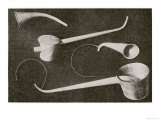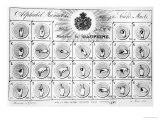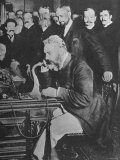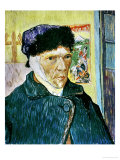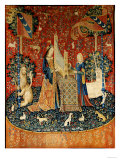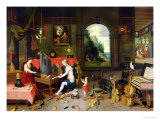|
|
Hearing, Audition, and Ears Anatomy Posters & Charts
for the science classroom and home schoolers, physicians and health professionals offices.
|
science > biology > anatomy > HEARING & EARS < health
|
|
Hearing, or audition, is the perception of sound, the vibration of matter, accomplished by the ear. Audiology is the study of hearing, balance and their disorders. The month of May is Better Hearing & Speech Month.
|
|
Hearing
Poster Text: Sound waves consist of vibrations of molecules in the air. When sound waves reach the ear, they are directed towards the eardrum, which begin to vibrate. The vibrations of the eardrum are magnified by the three bones of the middle ear, and then transferred to the fluid of the inner ear.
Within the inner ear, the vibrations stimulate hairlike receptor cells in the cochlea. These cells tranform the vibrations into electrical nerve impulses, which are sent to the brain and interpreted as sound.
Humans can hear sounds that range form 0 to 140 decibels. Ears can detect the direction from which a sound originates to with three degrees. A whisper is 10 dB or less, while a jet engine registers 120 dB or more.
|
|
|
|
Hearing Loss
Poster Text: Sound vibrations travel through the outer ear canal to the eardrum, then through the bones of the middle ear to the cochlea. Deep in the inner ear, the spinal-shaped cochlea turns vibrations into nerve impulses which are sent to the brain for interpretation as sound. The conversion of physical vibrations to electrical impulses is accomplished in the cochlea by two sets of hair cells along the organ of Corti.
Damage to the hair cells and cochlea is the most common cause of haring loss. This damage is usually caused by genetic factors, or by overexposure to sound. Excessive sound exposure damages hearing by over stimulating the tiny hair cells. When these cells are damaged, they no longer transmit sound impulses to the brain. The best way to avoid this kind of damage is to wear adequate hearing protection when exposed to loud noises.
Sound intensity is measured in decibels (dB). A normal conversation measures 50-60 dB, while a lawn mower enging is 90 dB. Sterio headphones can range from 105 to 110 dB. The loudest sounds that can be tolerated by the human ear are around 120 to 130 dB.
• Helen Keller posters
|
|
|
|
Ear-Organ of Hearing & Balance
Illustrates ear anatomy including right auricle, right tympanic membrane, middle ear, auditory ossicles, membranous ampulla, organ of corti, macula of saccule. Also explains and shows how we hear-- the physiology of sound.
|
|
|
|
Your Ears
Illustrates the inside of the ear and how it relates to balance. Shows how you hear and provides a “portrait of a sound.” Describes ear problems, loudness and answers questions such as “Why do your ears pop?” and “What are the spins?” Includes fun facts (“Sounds travel 4 times fast in water than in air!”) and includes fun projects for the home or classroom that to show how the ears and hearing work.
• Blueprint for Health posters
|
|
|
|
Ear, Nose & Throat
Shows general anatomy including the middle and inner ear, septum of nose, lateral wall of nose, and inspiration, phonation, and posterior view of the larynx.
|
|
|
|
Middle Ear Conditions
Shows photo of normal right eardrum and illustration of ear anatomy. Discusses and shows classifications and common complications of otitis media, such as Acute Otitits Media, Otitits Media with Effusion, Atelectasis, Perforation, and Cholesteatoma. Also shows middles ear development and drainage tube insertion.
• diseases posters
|
|
|
|
Overview of Five Senses
Poster Text: One thing all senses share is that when they detect something, they translate it inot a common form–the nerver signal, which travels along sensory nerves to the brain. These nerve messages are the body's "language." Sense organs transform stimuli (such as sound waves, light rays, flavors, odors, or physical contact) into electrical nerve signals, which are instantly flashed to the brain for interpretation and identification.
Taste: The four main tastes are bitter, sweet, sour, and salty. They are detected by collections of cells called taste buds, on the surface of the tongue. Smell also contributes to our sense of taste.
Touch: Sensory receptors located throughout the skin are sensitive to things such as texture, temperature, pressure, and pain. When the brain interprets signals from these receptors, we perceive a whole range of physical information about the object that has been touched.
Sight: Light rays enter the eyes through the pupil and the lens, and are focused into a clear image on the retina. Light-sensitive cells in the retina send messages along the optic nerve to the brain.
Hearing: Sounds are carried through the air in the form of waves. Our ears capture these waves, and convert them into electrical signals interpreted by our brains as sound.
Smell: Smell begins as chemical molecules floating through the iar. When they come in contact with the olfactory cells in our noses, nerve impulses are generated and sent along to our brains.
• more sense posters
|
|
|
|
Ludwig van Beethoven began to suffer a hearing loss in his twenties and by the age of 30, tinnitus, a “roaring” in his ears, made it difficult to engage in conversation and appreciate music. This hearing loss lead to a depression and contemplation of suicide; eventually Beethoven resolved to continue living through his art.
|
|
|
|
|
|
|
|
|
|
The “Wizard of Menlo Park”, Thomas Alva Edison, developed hearing problems at an early age: the cause has been attributed to scarlett fever in childhood with recurring middle ear infections, and to Edison's own story of being lifted by his ears by a train conductor.
|
|
|
|
Post Impressionist artist Vincent van Gogh cut off part of his left ear on Christmas Eve, 1888, shortly after his friendship with Paul Gauguin ended.
|
|
|
|
|
|
|
|
|
|
|
|
|
|
|
|
Ready to Listen
Communicate your way to conflict resolution. Positive communication starts with Active Listening, It's more difficult than you might think. Active Listening Essentials
• ENCOURAGE. Look directly at the other person show interest and never interrupt.
• CLARIFY what is being said by asking questions.
• RESTART, using your own words, what the other person says. This shows that you were listening and that you understand the message.
• RESPOND to feelings. Listen for the speaker's feelings and acknowlege them.
• COMMUNICATION BLOCKERS should never be used. They are accusing, interrupting, moralizing, judging, insulting or threatening.
• ACCEPT, APPRECIATE and UNDERSTAND the speaker.
• more peace & justice posters
• communications bookshelf
|
|
previous page | top
|
|
I have searched the web for visual, text, and manipulative curriculum support materials - teaching posters, art prints, maps, charts, calendars, books and educational toys featuring famous people, places and events - to help teachers optimize their valuable time and budget.
Browsing the subject areas at NetPosterWorks.com is a learning experience where educators can plan context rich environments while comparing prices, special discounts, framing options and shipping from educational resources.
Thank you for starting your search for inspirational, motivational, and educational posters and learning materials at NetPosterWorks.com. If you need help please contact us.
|
|
|










